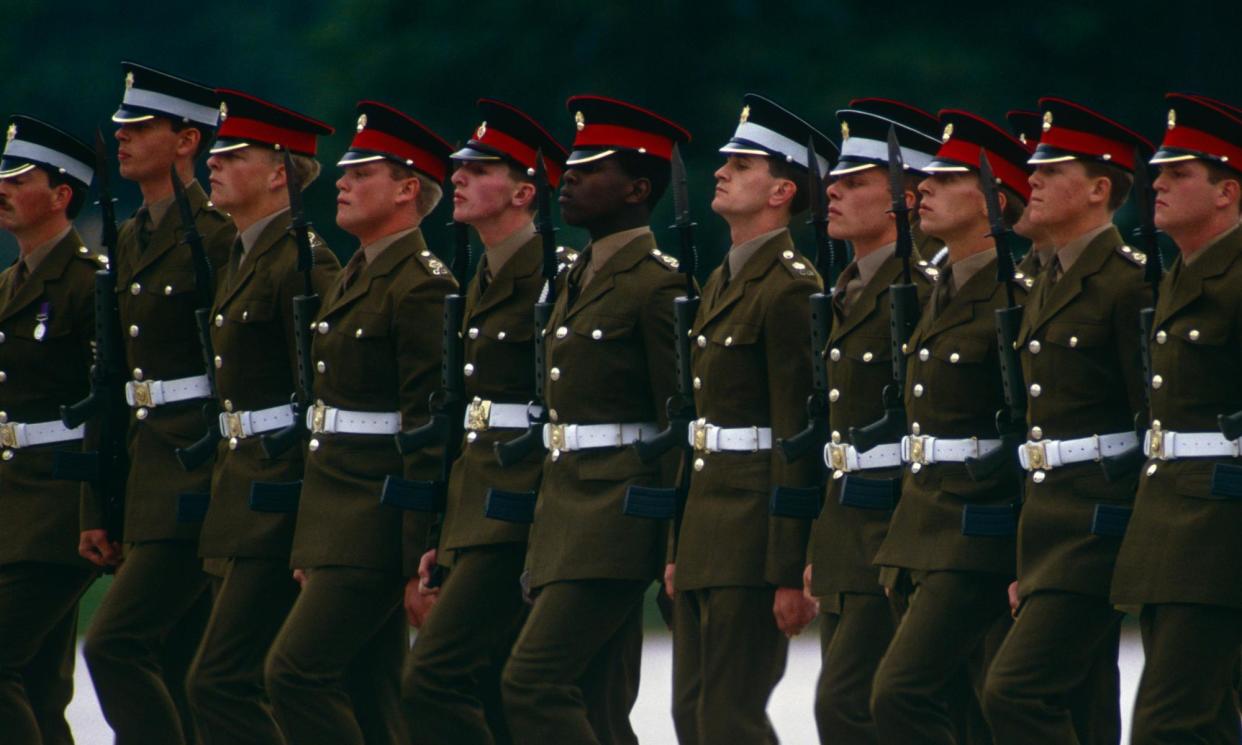British army may lift beards ban after 300-plus years

Alexander the Great apparently banned his soldiers from sporting them to prevent enemies getting a grip in combat. British troops in the Crimean war grew theirs down to their waist.
The history of the beard in the military has changed over centuries. By and large, however, the British army has banned them – except in extreme circumstances or with very specific exceptions – since the beginning of the 18th century.
Now army chiefs are reportedly considering welcoming the beard, hoping to attract hirsute recruits to swell the ranks, in a move aligning them with the Royal Navy, which has long allowed full beard and moustache sets, and the RAF, which permitted beards in 2019. The army board executive committee will debate the issue next week, the Sun reported
Julian Farrance, a senior curator at the National Army Museum, told the Guardian: “A lot of tradition within the British army comes from the fashion of the day. Beards were allowed right at the start in the 17th century. In the English civil war, you’ve got chaps with beards. By the beginning of the 18th century, beards are out of fashion in the army, and [they] don’t really ever come back, apart from out of necessity.”
In the Victorian era, “mutton chops” side whiskers were in favour, though regulations stipulated there must be one inch between the end of the moustache and the beginning of the whiskers, Farrance said.
Then there were famously photographs of soldiers in the Crimean war “with beards to hide a badger in”, he said.
“They haven’t enough wood to boil to eat food, let alone to shave chins. They came back home with beards down to their waist. There is one fantastic photograph, Crimean Heroes, of a load of guardsmen with great big bearskins and beards going as far down as the bearskins are going up.
“Queen Victoria saw the photographs and thought: they’re very manly looking. I’d love to meet them. So they arranged a meeting. But, of course, because they’re going to see the queen, they all shave their beards off. She was very disappointed.”
Regulations on moustaches, too, have changed. After the Crimean war, regulations forbade beards but mandated that officers refrain from shaving above their top lip, seemingly making moustaches compulsory, which remained in place until 1916.
“Whether it’s by regulation or by practice, there is not a situation where a soldier would be wearing a beard, unless it’s under extremely dire circumstances, right the way back to the beginning of the 18th century,” Farrance said.
An army spokesperson said: “There has been no change in army policy regarding beards, which can only be grown with the commanding officer’s authority. Exceptions are usually only granted on medical or religious grounds, or where tradition permits. However, dress and appearance policy is under constant review.”
Although there are exemptions for some specific army trades, or for SAS and SBS troops, current army regulations stipulate that men are generally expected to be clean-shaven, that any moustache should be trimmed and not below the line of the lower lip, and that sideburns should not descend below the midpoint of the ear and should be trimmed horizontally. Beards may be grown and maintained with a commanding officer’s authority, which should be granted only on medical or religious grounds.


